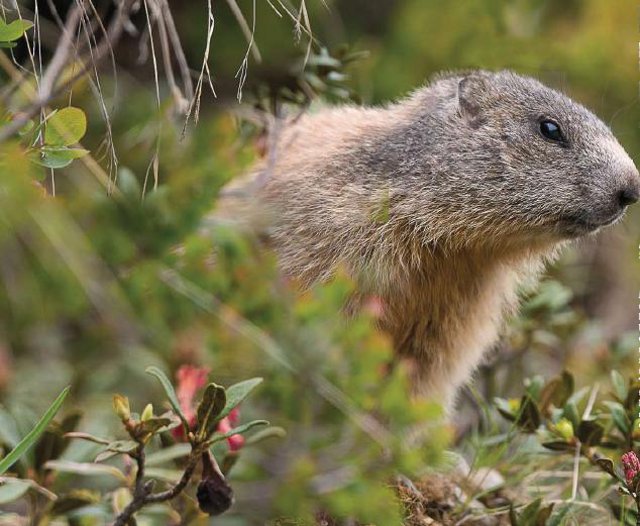Foto di Cesare Contin
Cute little visage, stocky body and with a surprising speed and agility inherited from distant ‘cousin’ squirrel, the marmot is readily identifiable in summer basking in the sun with friends on the upper Alpine slopes. Its very particular high-pitched ‘whistle’ alarm briefly draws the ‘lookout’ into our field of vision prior to him heading swiftly to the safety of his den.
He shares his time both in the sun and underground in long, well-structured tunnels with a number of exits – closed on the approach to winter for the long hibernation period. He won’t reappear until April, then late June sees the new arrivals make their entry. During the hot summer months activities around the dens are more frenetic but the adults remain ever-conscious of the dangers of predators – particularly the mountain eagle.
The marmot occupies mountain areas between 1500 and 2500m. where he enjoys the grassy banks but does not neglect rocky outcrops affording a ready source of refuge.
Our marmot chum is likely to measure 70 – 80 cm. and weigh around 6 kilos. Its key strength focuses on paws with impressive claws vital for tunnel creation. Narrow face, well developed incisors and laterally placed eyes perfect for ensuring a wide field of view. Long and dark tail and a deep, dark and warm fur, the marmot can live for as long as 18 years.
Marmots enjoy nothing more than roots, buds and shoots, and might sometimes include insects in their diet. Liquids are derived primarily through vegetables. Summer involves stocking up on food, duly turned into body fat, vital to survive the long winter hibernation.
A protected animal nowadays, its quiet and attentive disposition make it a firm favourite with hikers enjoying outings along ancient Valchiavenna pathways.



















